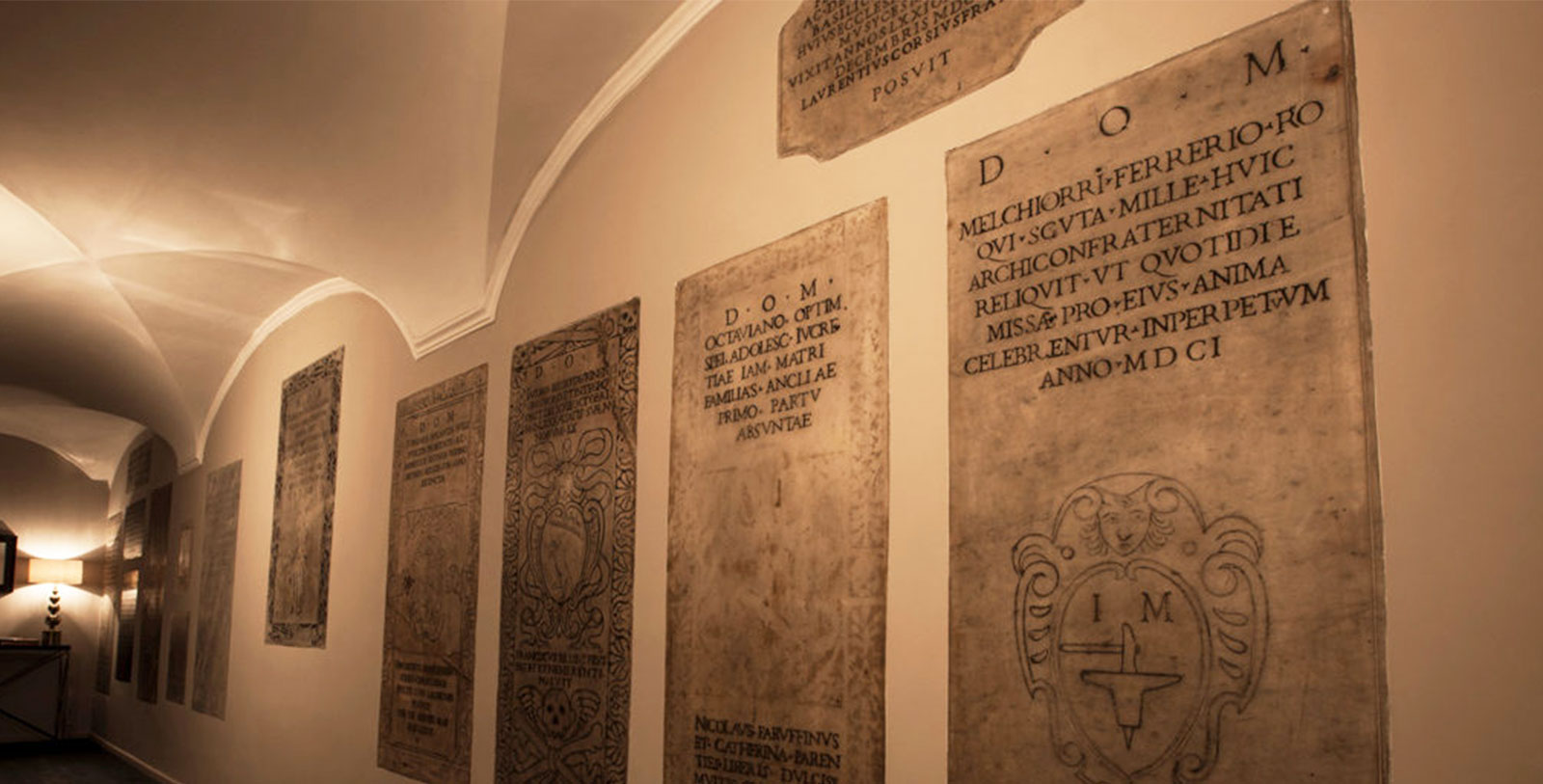Receive for Free - Discover & Explore eNewsletter monthly with advance notice of special offers, packages, and insider savings from 10% - 30% off Best Available Rates at selected hotels.
history
Discover the DOM Hotel, which was once part of a massive church known as the Santa Lucia del Gonfalone.
DOM Hotel was constructed between the 14th and 17th centuries, in which novel approaches to art and science spread throughout Europe. Situated on Rome’s historic Via Giulia, the DOM Hotel has entertained guests in the Eternal City since 2013. This terrific holiday destination has achieved great acclaim for its spectacular accommodations and unrivaled service. But the building has not always been a luxurious five-star hotel. It originally functioned as a palace that was connected to a much larger church known as the Santa Lucia del Gonfalone. The prominent Gonfalone Fraternity commissioned its construction at a time when many other religious edifices began to emerge along the Via Giulia at the beginning of the 1600s. The organization continued to care for the complex for the next three centuries, hiring a number of celebrated architects to maintain its structural integrity. For instance, Marco David and Francesco Azzurri brilliantly restored the location’s interior over the years, saving much of its historic marble and brickwork in the process.
In the early 20th century, the palace itself underwent a grand transformation into a monastery that was occupied by the priests of the Claretian order. The monks would occupy the building for the next several decades, eventually vacating the premises during the 1960s. The Società Cinesette then acquired the location, which converted it into an office space for the Italian Ministry of Justice. When that organization left in 2009, enterprising hoteliers quickly set about renovating the building into a premier boutique hotel. Today, the DOM Hotel proudly showcases its rich heritage through its wonderfully preserved architecture and historic displays. Even its name is an homage to its past, as “DOM” stands for “Deo Optimo Maximo” – a Latin inscription found inscribed on the adjoining church next door.
-
About the Location +
The Via Giulia itself is among Rome’s most historic destinations. Constructed at the behest of Pope Julius II (among others), the Via Giulia was home to several of Italy’s most illustrious families and intellectuals. Renowned artists such as Raffaello, Benvenuto Cellini, and Francesco Borromini all lived along this majestic thoroughfare at one point or another.


























